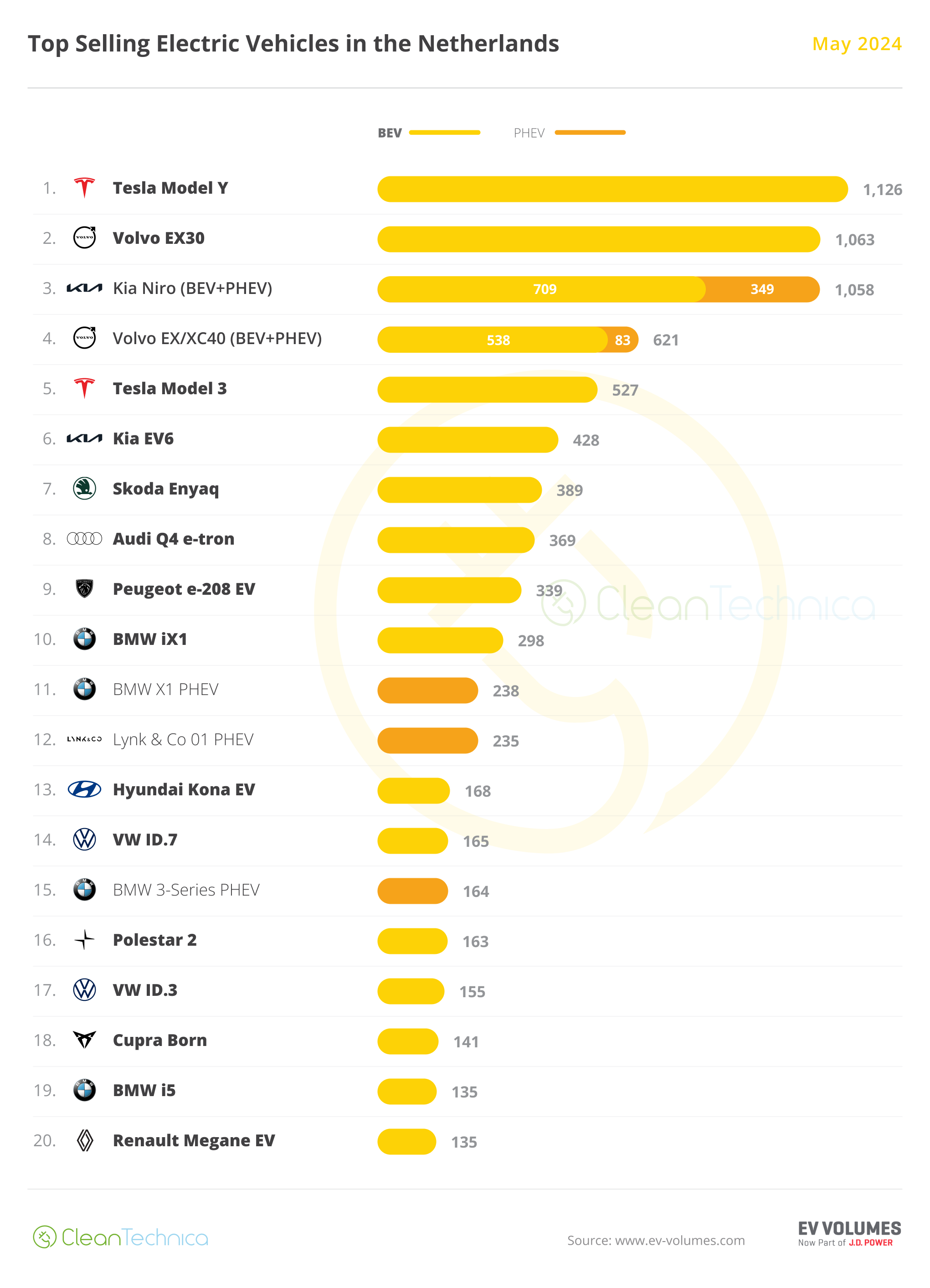Sign up for daily news updates from CleanTechnica on email. Or follow us on Google News!
Transportation has a brutal effect on greenhouse gas emissions — at 29%, greater than any other sector of the economy, including industry. Transportation electrification is essential, and the IEA 2024 Global EV Outlook report notes that electric vehicles (EVs) continue to make progress towards becoming a mass market product in a number of countries. The total number of EVs on the road worldwide has risen to 40 million, and there are almost 10 times as many private chargers as public ones, with most owners charging at home. So, why do we keep hearing about the pervasive consumer malaise around EV consumption? It’s time for some fact checks.
Over the past 12 months, we have all heard about how the slowing EV market. There is no reason to panic, though. The industry is following the natural product acceptance process, also known as the “adoption curve.” EV adoption rates experience highs and lows; these are to be expected. This major shift in the way we think of and use personal transportation is happening quickly, and it’s unsettling for humans — we just don’t like change.
However, to proclaim that the EV revolution is over is not only premature — it is just plain wrong.
Let’s look at some of the claims about the fall in EV popularity among consumers by zeroing in on a Yahoo! finance article about consumer reluctance to purchase EVs. The generally reliable media outlet seems not to have owned up to the nuances around EV ownership potential in 2024.
Fact check: Yahoo! finance claims that rising inflation is a major factor that inhibits consumers from buying EVs. But the US 6-month trimmed mean personal consumption index inflation rate is at 3.02%, compared to 3.15% last month and 4.54% last year. This is lower than the long-term average of 3.04%. Plus, the 2022 Inflation Reduction Act has several elements within it that have reduced EV prices for a whole new audience of EV buyers — I know, I just received $3980 from the IRS for purchasing the used 2017 Chevy Bolt I added to our EV collection last summer.
Fact check: Yahoo! finance adds that the reluctance of consumers remains a major hindrance in EV sales growth. Is the fault with consumers who hesitate, or is it automakers who are doing the EV slow-walk? The Sierra Club conducted a 2023 survey that revealed that 66% of dealerships had no EVs available for sale. Even more concerning, 45% of these dealerships indicated that they would not offer an EV even if they had the opportunity. Perhaps that’s because EVs diminish the profit margins of car dealerships, as buyers need fewer service visits due to the reduced number of EV moving parts. Also, automotive showrooms are filled with salespeople who lack knowledge about EVs, and dealerships aren’t ready to be transparent about EV benefits and educate their sales staff to better serve all customers.
Fact check: Yahoo! finance insists that dealerships are having trouble selling EVs because of a huge influx of new models and options. Add to that after-sales complaints, which usually involve charging problems and battery issues. The reality is that EV brands top the charts for owner satisfaction. Also, limiting sales, automakers keep focusing on premium, luxury vehicles instead of manufacturing affordable commuter cars. Analysts believe EVs are still on path to overtake combustion engine cars in the long term. Data from Motor Intelligence shows that EV sales in the US increased by 47% in 2023 and that growth clearly surpassed the growth of conventional car sales.
The Essence behind the EV Misinformation
Those of us who have made the transition from internal combustion engine (ICE) to electric-powered drivetrains tend to love our new wheels. Of course, we have made concessions. It must be said that the convenience of a reliable fueling station on every corner is no longer a given. We may charge at a neighbor’s place and buy the neighbors tickets to a show as a thank you. We may eat at a particular restaurant because it’s in a location with a charging station. We must plan our routes on longish trip, taking into account proximity to charging stations; we must build in more time to account for charging, especially if our capacity isn’t that fast or there isn’t a fast charger available.
But we adapt to the contextual constraints, knowing that we have a more reliable, high-tech, and planet-loving vehicle than ever before.
BloombergNEF calculates that 30% of the new vehicle market spends less than $35,500 on a new auto purchase. A $25,000 Tesla would be cheaper than 95% of new cars bought in the US last year and would stabilize US automakers abroad, where Tesla and other companies are confronting the real competition of Chinese companies like BYD. Several more affordable models are set for US release in 2024, such as the Chevrolet Equinox EV and Volvo EX30, but it may still be a few years before every automaker has one or more lower priced options.
Imagine what the effect will be when more consumers are able to afford an EV.
Final Thoughts
The IRA has had a huge impact both in the US and abroad. Along with the Bipartisan Infrastructure Law, the legislation has helped spur tens of billions of dollars of investment toward a domestic EV and battery supply chain and has triggered competitive responses from a variety of auto industry interests.
Yet false claims about EV demand, reliability, and performance are circulating widely, and consumers who are the target audience for EV misinformation possess a lack of familiarity with EVs as a result. Take rural drivers, for example: it is more challenging for rural drivers to separate fact from fiction as they consider purchasing an EV, and that turns into their uncertainty about what an electric transportation future looks like.
The US has hit the “tipping point” of 5% sales, but that trend didn’t tip the way other countries did. According to our own CleanTechnica analyses, 7.2% of 2023 auto sales were fully electric auto sales and 7.8% of Q4 2023 auto sales were fully electric auto sales.
While there are some serious challenges surrounding EVs — such as the need to build out the nation’s charging infrastructure — leading forecasters agree that EV sales and market share will continue to grow in 2024. As our chief editor at CleanTechnica, Zachary Shahan, writes, “While there’s a lot of hype claiming that EV sales are dropping, or at least that EV sales are not growing by as much as they were, it’s clear that the electric vehicle market is making fast strides upward.”
It’ll help, Zach says, when Tesla lowers Model Y and Model 3 prices (as it has been doing), as he suspects those price adjustments will spur EV sales trends to change in kind.
Have a tip for CleanTechnica? Want to advertise? Want to suggest a guest for our CleanTech Talk podcast? Contact us here.
Latest CleanTechnica.TV Video
CleanTechnica uses affiliate links. See our policy here.





